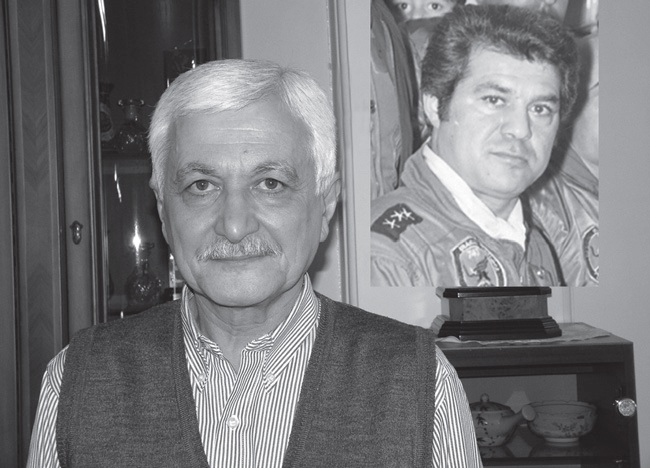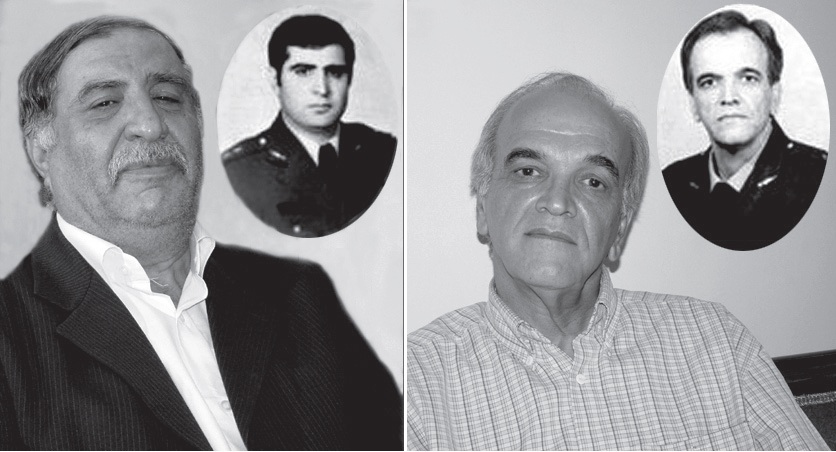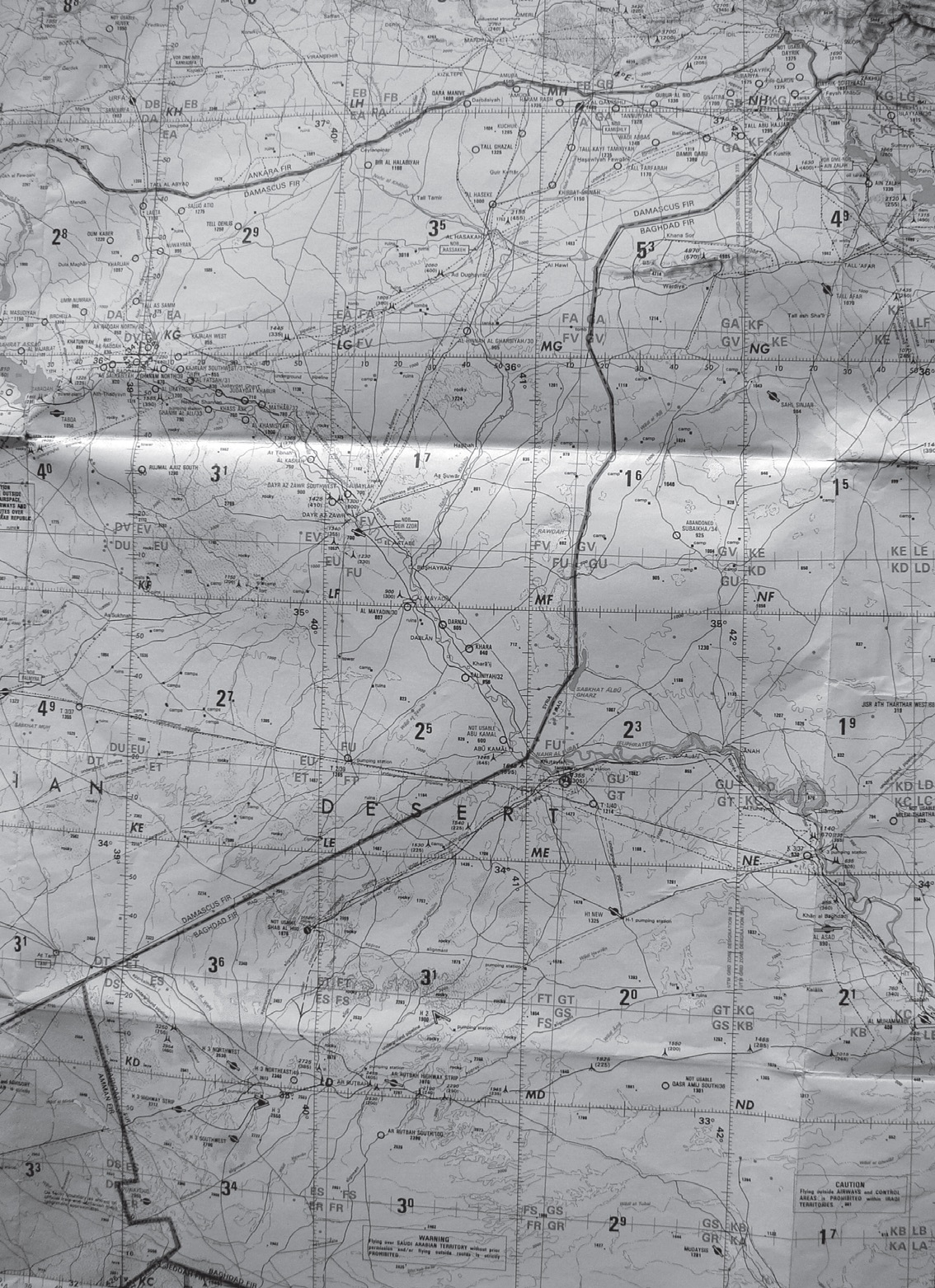Air Raid to Al-Waleed (27)
The Story of Demolishing Fighters and the Equipment in Al-Waleed Triple Military Bases Known as H-3
2016-7-10
Air Raid to Al-Waleed (H-3)
The Story of Demolishing Fighters and the Equipment in Al-Waleed Triple Military Bases Known as H-3
By: Brigadier General Ahmad Mehrnia
Tehran, Sooreh Mehr Publications Company
2010 (Persian Version)
Translated by: Zahra Hosseinian
First Pilot of first tanker 747 or the leader in the Syria was Captain Kamran AmirEtemadi and the Second Pilot was Captain Mohammed Eskandarion (both were teacher too) in the second stage, that is flying from Damascus, and Izadseta was present in their aircraft too. Other crews of these two supertankers were:
- Sub Lieutenant Ali Akbar Bahadori and Sub Lieutenant Abbas Anbari Attar, flight engineers
- Sub Lieutenant Iraj Taherkhani, Sub Lieutenant Abolqasem Habibi, Sub Lieutenant Sepehr Kharazian, and warrant officer Morteza Ali TaqiBeygi, boom operators
First technician Yar-Ali Klockow, First technician Gholam Reza Afzali, warrant officer Ali Daryani, and warrant officer Mohammad Haj Hosseini, crew chiefs

Pilot Mohammad Eskandarion (2008); Right: Captain Kamran Amir-Etemadi
Currently flying in the commercial sector, Captain Eskandarion quoted his memories about those days:
"At the appointed hour, we were ready into aircraft and called Major Abdul Alizadeh, first pilot of tanker 707 that was located above Lake Uremia. Conversations were exchanged through HF radio contact with short words and passwords. When we assured of successful refueling and departure of phantoms, asked taking off permit by Izadseta’s order according to the schedule, and seemingly we flew toward Tehran from Damascus airport. We flew toward North East of Syria border in accordance with plan, and reduced our altitude to less than a thousand feet while cut off our contact with ground stations. In a predetermined desert region we began holding time. We had circulated one or two times when bombers arrived; fortunately, they had found us easily and attached to the boom for refueling in turn. We accompanied phantoms in a direction from north to south, on the far eastern border of Syria, and at a very low altitude which only had been carried out once before the revolution on an Ariel parade. As soon as one of them was separated from tanker, the other one attached and refueled. Some of them perhaps refueled two or three times. Finally, we reached to the location which was determined for separating. They said goodbye and went toward the target. Air control centers of Turkey and Syria had called us several times and we hadn’t responded, so we answered them and said that because of technical problem, we are flying at low altitude toward Damascus. We kept flying a few miles toward there and again returned to a predetermined region in South East of Syria. About ten minutes or so the Phantoms again came and gladdened us. Only one of them had a problem. Examining existing airports in the region, Izadseta immediately chose one that I think it was an airbase without facilities; and we flew toward and guided pilot Khazraei over it, as delivering fuel. Before airport authorities understood what has come up, the aircraft landed and quickly several cars moved toward them. We circulated above the base and left the region towards Damascus, when saw the aircraft stopped and their pilots came out safe. As delivering fuel to the Phantoms, number two tanker also kept flying close to the three corner border of Syria, Iraq and Turkey; and they were separated there and each one continued flying toward determined rout. In excuse of emerging a problem we had landed at Damascus airport and waited into aircraft, and Izadseta did some coordination with authorities. It took a little more than two hours when two phantom pilots joined us by a helicopter; and after receiving permission to fly, we moved back to the motherland again."
After entering Syria territory, the leader of eight aircrafts team finds refueling tankers easily at the appointed location and refueling starts fast. For maximizing security and surprising the opposition at the lowest tactical altitude, that is less than three hundred meters, refueling operations is done. A condition in which the Syrians can’t have radar control on it and also Iraqi forces don’t informed about it. According to the previous brief, and after refueling near the start point ـ in the last point in Syria territory ـ the team must form three flight group as follow in order to bomb three air bases of Hـ3:
The first group, three aircrafts, northern base:
Leader: Capt. Mahmoud Eskandari/ Lt. Kaveh Koohpayeh Iraqi
No. 2: Major Mahmoud Khazraei/ Lt. Asghar Bagheri
No. 3: Major Manouchehr Toosi/ Capt. Mohammed Hussein Nikookar

Second Brigadier General Manouchehr Toosi (2008); at the old photo: he is Major. And Colonel Mohammad Hussein Nikookar (2009); at the old photo: he is First Lieutenant.
The second group; two aircrafts, southern base:
Leader: Major Naser Kazemi/ First Lt. Ibrahim Pourdan
No. 2: Capt. Manouchehr Ravadgar/ First Lt. Ahmad Soleimani
The third group; three aircrafts, main base:
Leader: Major Farajollah Baratpour/ First Lt. Mohammed Javanmardi
No. 2: Lt. Col. Qassem PourGolcheen/ First Lt. Mohammad Reza Azarfar
No. 3: Capt. Gholam Abbas Rezaei Khosravi[1]/ First Lt. Mohammad Ali Akbarpour Sarabi[2]

Top: Major General Martyr Gholam Abbas Rezaei Khosravi; and beside the Phantom: Major General Martyr Mohammad Ali Akbarpour Sarabi; when they were Captain.
Now, with Leader’s signal which is exchanged among all members, the switch key of ammunition, which was in off mode, become on to arm the bombs. This means the last minutes of reaching to the target! Hearts rate would increase slightly. They must be very careful lest all these efforts to be wasted through the smallest deviation from the rout or mistakes like not arming the bombs. Therefore, when the main team is divided into three sub-groups, the new leaders again order their group to ensure about arming the bombs by signaling.
In accordance with flight brief, the northernmost base was the target of first three aircrafts group; the southernmost base, which had been said to be less important, was the target of two aircrafts group; and the main or middle base was the target of the second three aircrafts group. Given to the reports, targets and available equipment in the main and northernmost base was more important and valuable than the south base. Look at a map:

The approximate map of refueling Boeing 747 location and the invasion rout to the three H-3 or Al-Waleed base
From the beginning Invasion Point (IP), the speed of aircrafts increased to 540 nautical miles to stay less in the target area, as well as greater protection against possible defense and intercepted by enemy aircrafts. According to the distance and errors which occur naturally in the navigation device of INS during long distances, the leader has to make use of the map simultaneously and matches the ground points with it; a very hard work in low altitude and speed of 9 miles or about 16/6 kilometers per minute (about a thousand kilometers per hour) in that barren desert. All participants in operations knew about it and because of that they were concerned about not finding points after refueling or approaching to the populated parts of Syria and being confused with Israeli aircrafts. Some of these pilots said in an interview: "When we saw the road junction, which was the first point in the rout of refueling from tankers, we were laughing. By seeing the second point, that is the intersection of the road, we got energy; and when saw the third point (intersection of the road), we completely knew that everything will be good with the blessing of God."
To be continued…
[1]. On November 13, 1981, in a parade in Bandar Abbas, Capt. Gholam Abbas Rezaei Khosravi along with First Lt. Mohammed Babzartabi, the pilot of rare cockpit, martyred in an air accident.
[2]. On May 22, 1981, on a training flight with Capt. Pilot Mostafa Ghasemi, Major Pilot Akbarpour, as a pilot teacher in the rear cockpit of F-4 aircraft, crashed in the South West of Tehran's Mehrabad Airport and both martyred. RIP.
Number of Visits: 5048








The latest
Most visited
A section of the memories of a freed Iranian prisoner; Mohsen Bakhshi
Programs of New Year HolidaysWithout blooming, without flowers, without greenery and without a table for Haft-sin , another spring has been arrived. Spring came to the camp without bringing freshness and the first days of New Year began in this camp. We were unaware of the plans that old friends had in this camp when Eid (New Year) came.
Attack on Halabcheh narrated
With wet saliva, we are having the lunch which that loving Isfahani man gave us from the back of his van when he said goodbye in the city entrance. Adaspolo [lentils with rice] with yoghurt! We were just started having it when the plane dives, we go down and shelter behind the runnel, and a few moments later, when the plane raises up, we also raise our heads, and while eating, we see the high sides ...The Arab People Committee
Another event that happened in Khuzestan Province and I followed up was the Arab People Committee. One day, we were informed that the Arabs had set up a committee special for themselves. At that time, I had less information about the Arab People , but knew well that dividing the people into Arab and non-Arab was a harmful measure.Kak-e Khak
The book “Kak-e Khak” is the narration of Mohammad Reza Ahmadi (Haj Habib), a commander in Kurdistan fronts. It has been published by Sarv-e Sorkh Publications in 500 copies in spring of 1400 (2022) and in 574 pages. Fatemeh Ghanbari has edited the book and the interview was conducted with the cooperation of Hossein Zahmatkesh.

